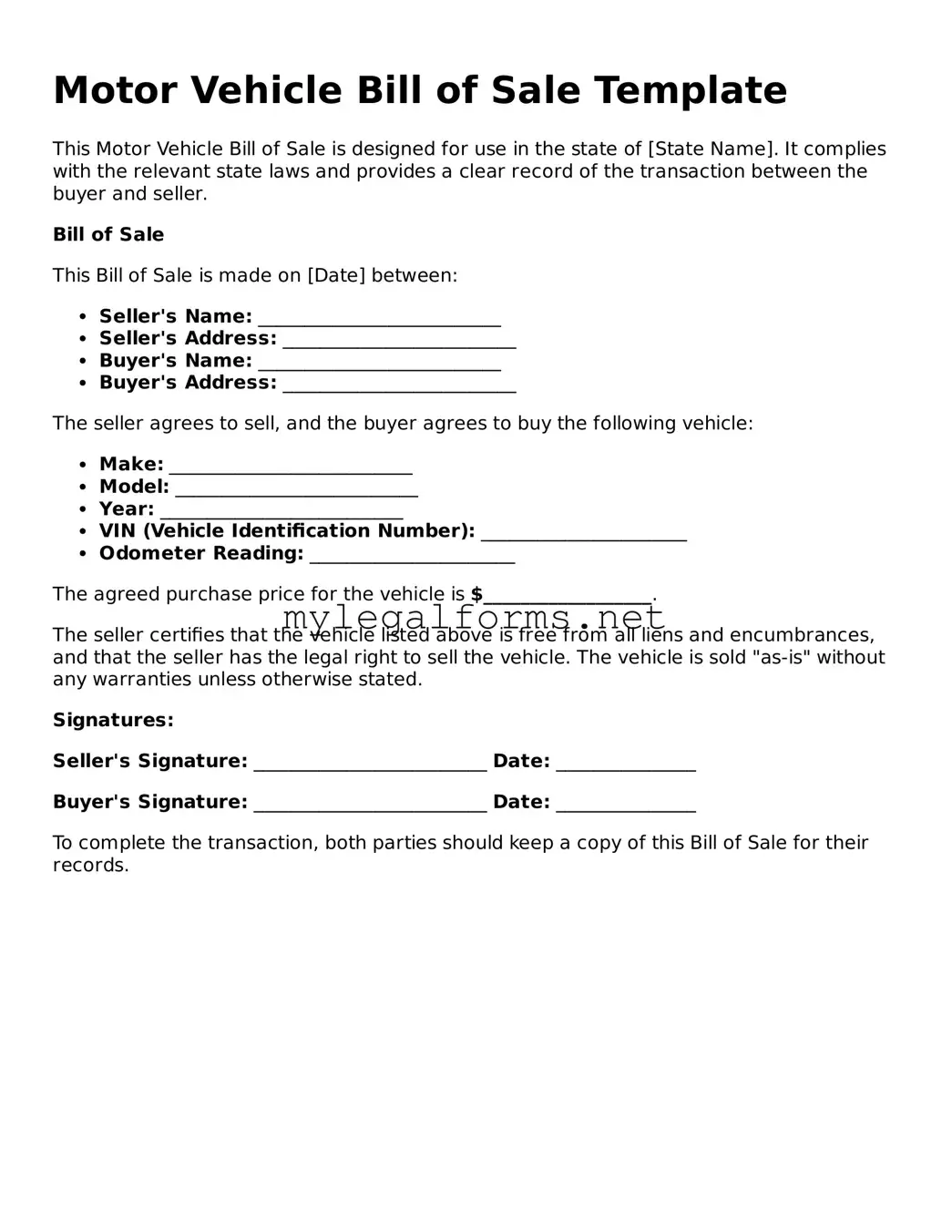Motor Vehicle Bill of Sale Template
This Motor Vehicle Bill of Sale is designed for use in the state of [State Name]. It complies with the relevant state laws and provides a clear record of the transaction between the buyer and seller.
Bill of Sale
This Bill of Sale is made on [Date] between:
- Seller's Name: __________________________
- Seller's Address: _________________________
- Buyer's Name: __________________________
- Buyer's Address: _________________________
The seller agrees to sell, and the buyer agrees to buy the following vehicle:
- Make: __________________________
- Model: __________________________
- Year: __________________________
- VIN (Vehicle Identification Number): ______________________
- Odometer Reading: ______________________
The agreed purchase price for the vehicle is $__________________.
The seller certifies that the vehicle listed above is free from all liens and encumbrances, and that the seller has the legal right to sell the vehicle. The vehicle is sold "as-is" without any warranties unless otherwise stated.
Signatures:
Seller's Signature: _________________________ Date: _______________
Buyer's Signature: _________________________ Date: _______________
To complete the transaction, both parties should keep a copy of this Bill of Sale for their records.
